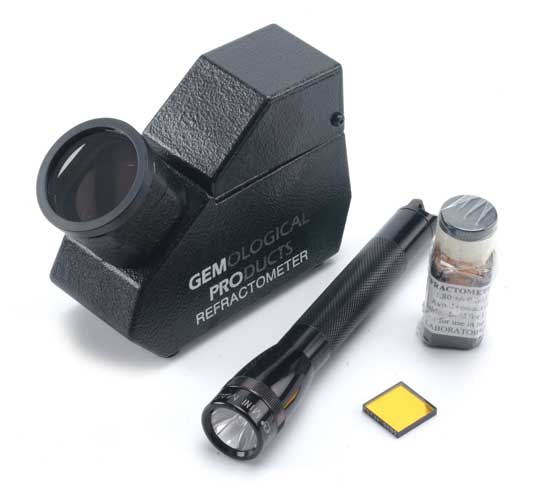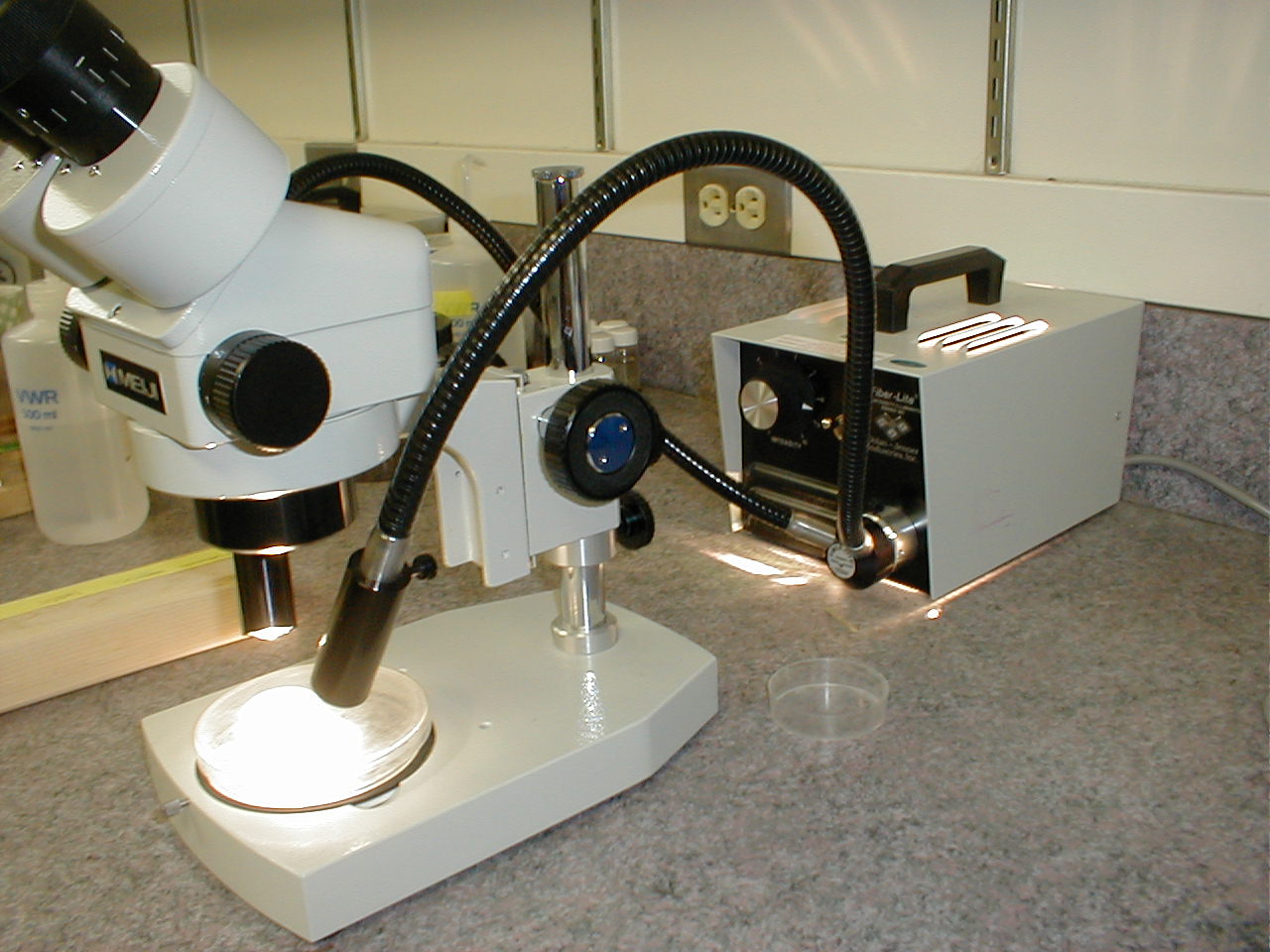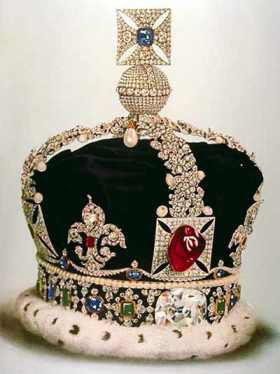 Advanced Gem Lab -
Advanced Gem Lab -
A deeper look at colored gems
Along with the basic equipment (discussed in last month’s JII), an advanced gem lab will have other gemological instruments. A number of these are specifically for looking at colored gems.
Beyond Diamond
A diamond is a diamond (as long as it’s not a fake). The appraiser determines whether it is natural or lab-made, and gives details on its 4 Cs—cut, color, clarity and carat weight. Most gemologists are trained and experienced with diamond, as it is the most popular gem used in jewelry.
For a colored gemstone, just identifying it can be a challenge. The JCRS site discusses emerald, ruby, and sapphire in some detail, and pictures another 32 of the most popular colored gems. But there are literally hundreds of minerals that have been cut as gemstones.
An advanced gem lab usually includes instruments that help identify colored stones and their treatments. Here are a few instruments the appraiser might use – but most important is the last one listed.
Spectroscope
 Each mineral has a unique spectral pattern. It is as distinctive as a fingerprint. The spectroscope reveals vertical black lines in the spectrum showing which wavelengths are absorbed. This is useful in distinguishing visually similar and/or treated stones, such as natural yellow vs. irradiated yellow diamonds.
Each mineral has a unique spectral pattern. It is as distinctive as a fingerprint. The spectroscope reveals vertical black lines in the spectrum showing which wavelengths are absorbed. This is useful in distinguishing visually similar and/or treated stones, such as natural yellow vs. irradiated yellow diamonds.
 Polariscope
Polariscope
A polariscope shows the paths that a beam of light takes as it goes through the stone. If light passes through as a single beam, the gem is “single refractive.” Few gems are single refractive, so this result narrows the choices for an appraiser identifying the stone.
If the beam is broken into two beams, the stone is “double refractive.” Most gems, including emerald, ruby, and sapphire, fall into this category. Others, like tanzanite and andalusite, break the light into three separate beams.
The polariscope would distinguish ruby (double refractive) from spinel (single refractive), for example. This distinction wasn’t possible in the past. One of the most famous gems in the world, in the British crown jewels, was long considered a ruby because of its deep red color. Now we know it to be spinel.
Refractometer
Refraction is the term for the deflection or bending of a light wave as it passes from one medium into another—like the way a stick seems to bend when it enters water. The refractometer  measures how light is bent when it enters a gem. This reading is key to identifying the gem.
measures how light is bent when it enters a gem. This reading is key to identifying the gem.
Refractometers have a larger life than just on the appraiser’s desk. Long before their role in gemology, refractometers were used to set prescriptions for eyeglasses. And vintners use them to measure the refractive index of grape juice, to determine when the grapes are ready to be picked to make wine.
Chelsea filter
 The Chelsea filter works by allowing only certain wavelengths of green and red colors to be transmitted. Gems transmitting these colors will appear either red or green, while others simply appear dark. It can be useful for spotting certain color treatments, by transmitting color that would not be present in the untreated stone.
The Chelsea filter works by allowing only certain wavelengths of green and red colors to be transmitted. Gems transmitting these colors will appear either red or green, while others simply appear dark. It can be useful for spotting certain color treatments, by transmitting color that would not be present in the untreated stone.
 Fiber Optic Light on Microscope
Fiber Optic Light on Microscope
The fiber optic light attached to the microscope focuses an intense beam of light on the gem, allowing the appraiser to see deeply into the stone. Detailing the gem’s inclusions is crucial in arriving at a valuation.
Appraiser’s Experience & Expertise –
the most important tools
Gemological instruments require training to learn to use properly. Reading and understanding the results may be difficult. With experience, the gemologist learns to make subtle distinctions and interpret results.
The color of a colored gem is its most important determinant of value, so a precise description of the color is crucial. This requires familiarity with the type of gem, a trained eye, and expertise in describing the color in generally accepted gemological language.
Most jewelers deal primarily with diamonds. Not every jeweler, nor even every trained gemologist, is competent to appraise colored gems. A reliable appraiser of colored gem jewelry is a jeweler experienced in the buying and selling of colored gems, one who knows the market for the gem in question, as well as treatments and frauds associated with it.
FOR AGENTS & UNDERWRITERS
Colored stones derive half their value from their color — described in terms of tone, saturation and hue. A detailed description is important because colors of stones can vary widely. Sapphires, for example, can be not only blue but also variations of pink, orange, purple and green.
As colored gems become more popular, agents and underwriters need to be prepared for more variety in the jewelry they insure. In the current economy, many buyers are choosing less expensive stones that look like higher-priced gems.
For any colored stones, it is essential that the appraisal be written by a gemologist experienced with colored gemstones and familiar with current pricing, treatments and frauds.
For all high-value jewelry, be sure to get a detailed appraisal from an appraiser who is not the seller.
Preferably, the appraisal should be on JISO 78/79 form, written by a trained gemologist (GG, FGA, or equivalent), with additional insurance appraisal training. One course offering such additional training is the Certified Insurance Appraiser™ (CIA) course of the Jewelry Insurance Appraisal Institute, Oakland, CA.
FOR ADJUSTERS
Compare the sales receipt with the appraisal. If there is a great discrepancy between selling price and valuation, the selling price probably reflects value more accurately. If the sale price seems too low for the appraised value, it’s possible that the gem was fracture-filled, or was synthetic, or was a lower-value substitute, such as spinel passed off as ruby. A jewelry insurance expert may help in determining this.
If a claim is made for damage, ALWAYS have the damaged jewelry examined in a gem lab by a trained gemologist (GG, FGA, or equivalent), preferably one who has additional insurance appraisal training, such as a Certified Insurance Appraiser™. The exam:
- will identify the gem;
- will verify the quality of the jewelry;
- may supply information missing from the appraisal;
- may reveal that the "damage" is not damage at all;
- may show the damage resulted from breakdown of fracture-fill material.
©2000-2025, JCRS Inland Marine Solutions, Inc. All Rights Reserved. www.jcrs.com


